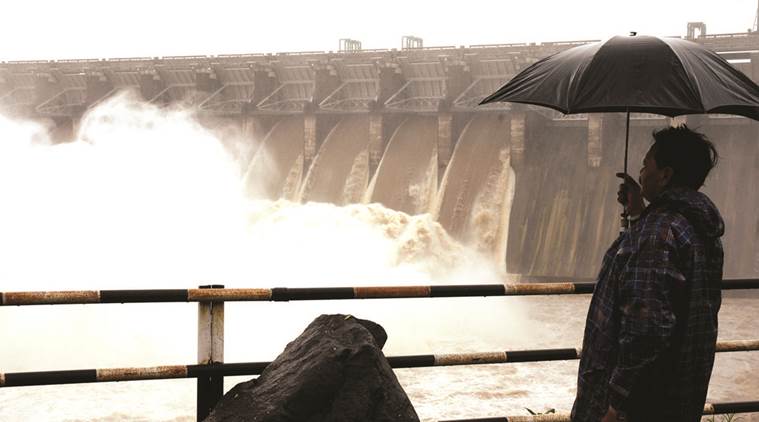“During summers, there is rise in water usage, which is estimated to be around 10 per cent. So, keeping both things in mind — water usage and water level in the Ukai dam, we have decided to supply 1,150 million litres daily (MLD) to the people of Surat city.
With dwindling water level in Ukai dam, which supplies water to Surat city, the Surat Municipal Corporation (SMC) on Monday decided to cut water supply to the residents by 10 per cent. Water supply for irrigation from Ukai dam has also been completely stopped.
The water level in the dam stood at 279.64 feet (335 MCM) on Monday — 14 feet (639MCM) less as compared to the water level of May 20 last year.
“During summers, there is rise in water usage, which is estimated to be around 10 per cent. So, keeping both things in mind — water usage and water level in the Ukai dam, we have decided to supply 1,150 million litres daily (MLD) to the people of Surat city. We are also monitoring the water level of Ukai dam. We are in regular coordination with the dam authorities and are taking regular details about the water level in the dam,” said Bharat Dalal, city engineer of SMC.
According to civic officials, the population of Surat city has been growing at the annual rate of nearly 7 per cent, thereby increasing the demand of water. On an average, the SMC supplies 1,150 MLD to residents, but during summer season due to increase in demand, the civic body draws additional 1,200 MLD of water from Tapi river.
“This year, there is a shortage of water in the (Ukai) dam. We have stopped supply of water for irrigation purpose, seeing the quantity of water in the dam. The current water level in the dam is, however, enough to meet the demand of drinking water till August 2016,” said S R Mahakaal, Superintendent Engineer at the Irrigation Department.
Last monsoon, due to below average rainfall in the upper catchment areas of Madhya Pradesh and Maharashtra, Ukai dam was not fully filled. With shortage of water, the dam authorities had carefully discharged water and even has reduced number of rotations given for irrigation purpose through canals network.
Similar water cut has been in force in Junagadh in Saurashtra last December due to low water level in local dams due to deficient monsoon. “Due to poor monsoon, the water storage in Anandpur and Hasnapur dams, the two major local sources, was less than normal, and availability of Narmada water was also limited. Therefore, we imposed a cut in supply and started distributing water every third day instead of the routine schedule of supplying water every alternate day,” said Alpesh Chavda, executive engineer at Jamnagar Municipal Corporation.
Chavda said that Junagadh civic body is drawing water from Anandpur, Hasnapur and Wilingdon dams, and another 7 MLD from Narmada canal network. “We are drawing water from 150 borewells and 35 open wells to supply to city. Our total demand of water is 32 MLD and we are distributing 25 MLD,” he said, adding that the civic body supplies water for nearly one hour.
Gandhinagar residents are getting water supply daily for around two-and-half hours, though there has not been any cut in the supply in the current year. The daily water usage in the Capital is around 58-62 MLD.
“There is no water scarcity problem in Gandhinagar. The city has been getting around 58-62 MLD water and the supply has continued,” Executive Engineer L K Vaghela said.
In Jamnagar, civic officials said that they have maintained water supply every alternate day and that no water cut has been imposed this summer despite a very poor monsoon.
Rajkot and Bhavnagar civic bodies have also not imposed any additional water cuts this summer in their respective cities. Rajkot Municipal Corporation supplies water for 20 minutes every day and the city has not faced any water cuts in the last five years.
With ENS, Rajkot
Source: Read Full Article


